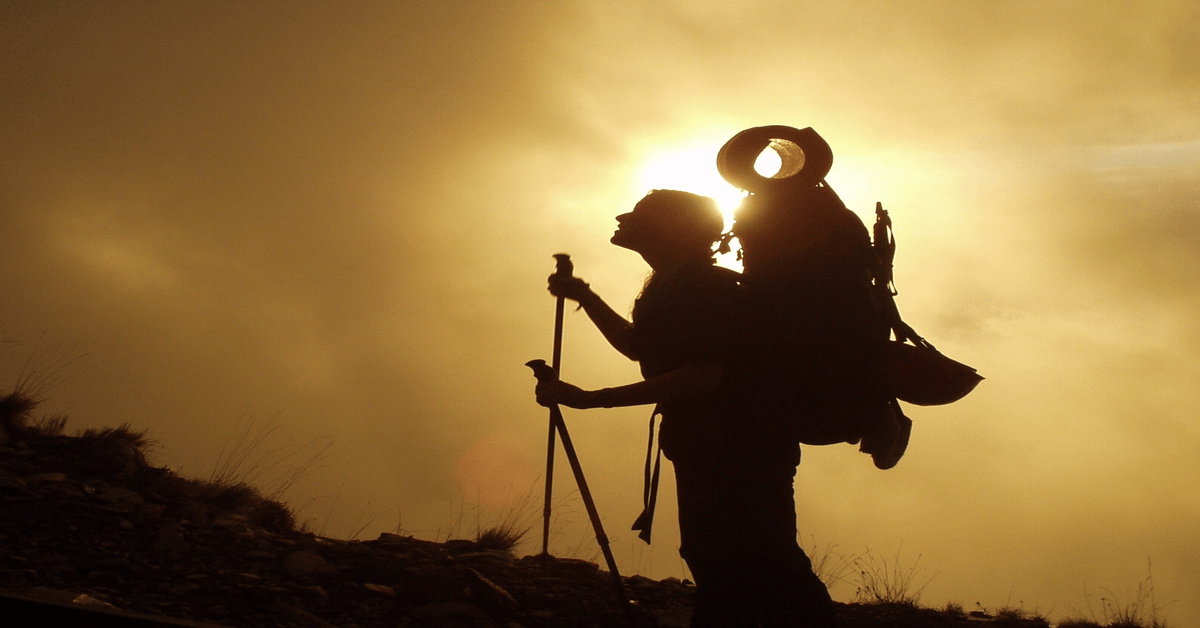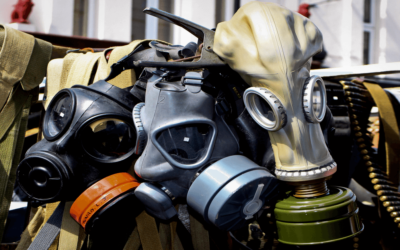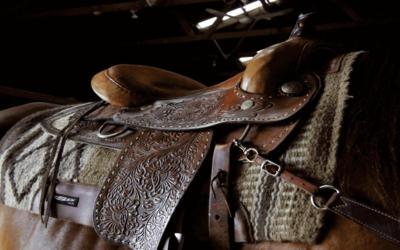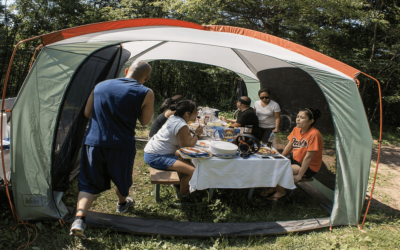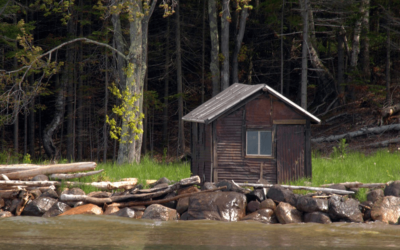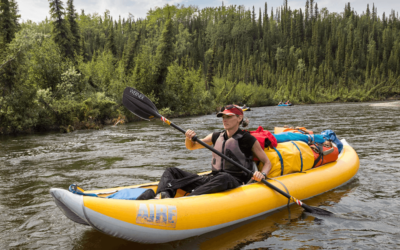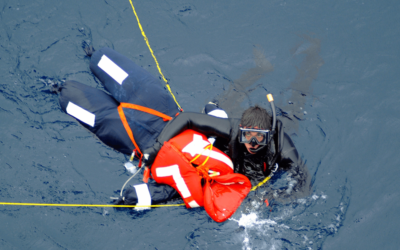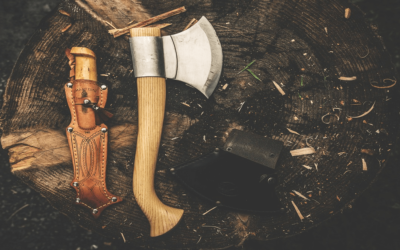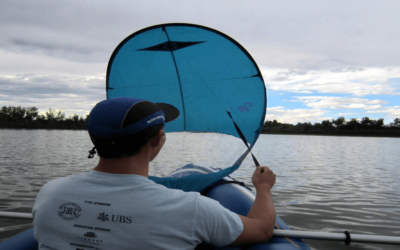Trekking is more difficult than hiking since it tests one’s capacity, perseverance, and brain just as the mental limit. The soul of trekking is tied in with setting up your bivouac at nightfall, setting aside the effort to take a gander at the stars, and finding new scenes consistently. You settle on the setting: the inconceivability of the desert, the town or open country, the excellence of the mountains, and so on.
Trekking For Beginners: 7 Essentials & Ultimate Guide
Trekking for beginners can be intimidating, so we are here to help you do it the right way. Our beginner’s trekking guide will give you the proper guidelines, essential gear to pack, and how to prepare for a trekking trip like a pro.
7 Trekking Essentials: Never Trek Without These!
Here are a few nuts and bolts that can help make your experience more agreeable and satisfying. It is anything but a total rundown, yet an excellent perspective for beginners.
1. Careful Route Planning
As in each busy work, it’s significant that you know your cutoff points. Try not to go on your first-historically speaking trip with an excessively troublesome path. Get your gear and gradually develop your fortitude. Being in great shape for a journey implies that you are not battling and rushing your way up. This should be a fun and pleasant experience, not carefully troublesome.
In case you’re not in great shape, don’t stress. Everybody begins someplace. Fabricate your strength by going on long strolls. Work on wearing a day pack when scaling grades and steep plummets. When you’re confident, have a go at making a little trip, ideally with a gathering, so that they can help and guide you through the interaction. The length, the sort of territory, and the height change are things you need to consider while picking your course.
Everybody needs to begin someplace. Rather than bouncing straight into an exhausting walk, like Everest, start with something simpler. Careful discipline brings about promising results. The more experience you can procure, your journeys will be pleasant.
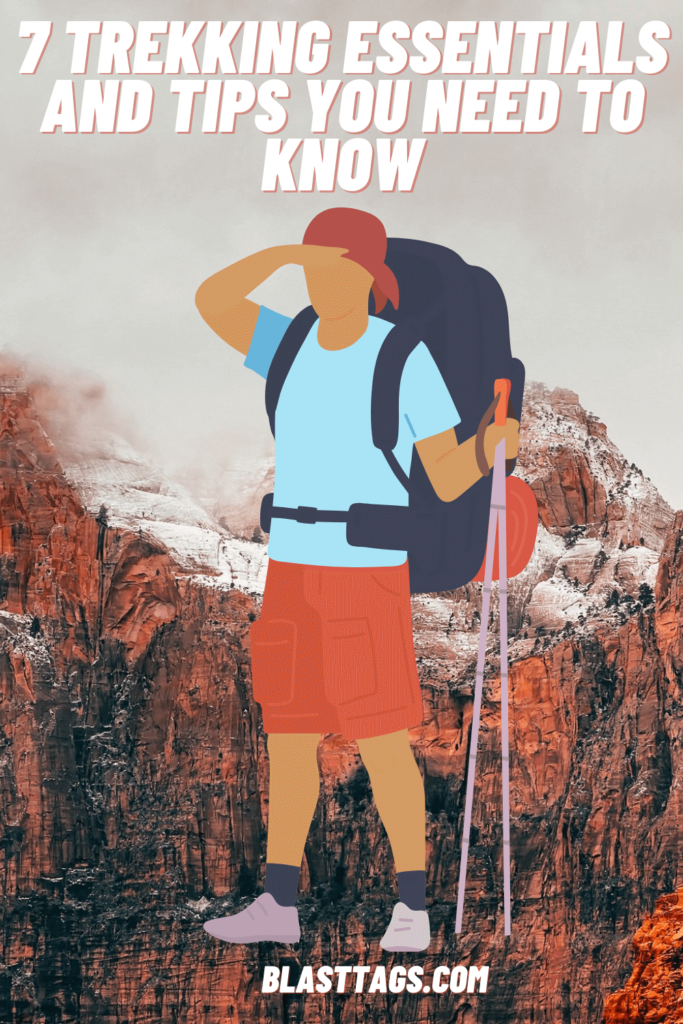
2. Pay Attention to Your Gear
If there is a single word of counsel that we can give you regarding trekking, it is to ensure that you have great footwear that is reasonable for the path. Great footwear is an unquestionable requirement if you are not kidding about trekking. Put resources into great quality boots you will want to utilize and wear for an extremely significant time. Due to low-quality footwear, people have gotten blisters.
Trekking boots are made to bear different territories and will keep you from slipping and harming yourself. The best ones go up to your lower legs, which have the most help. Besides great trekking shoes, getting an agreeable knapsack is likewise significant. You would prefer not to drag something awkward. Picking the correct rucksack with legitimate back ties, hip lashes, and backing will save you from being awkward.
The excursions that amateurs have gotten rankles on their feet or harmed their lower legs while on a walk is absurd, particularly when it tends to stay away from by putting resources into an excellent pair of strolling boots. Strolling boots will assist with giving hold on the slippery landscape and help to help the lower leg.
3. Stay Hydrated and Well-Fueled
Three words: Pack Sufficient Water. Frequently, you belittle the measure of water to welcome on a journey. It would help if you recollected that it’s better to have an abundance instead of getting yourself parched and dried out. Water-to-go jugs and other water filtration gadgets are helpful when making long trips. During your trip, ensure you stay appropriately hydrated by drinking loads of water. It likewise wouldn’t damage to pack some light tidbits like energy bars to help make a big difference for you.
Your energy prerequisites will increment while trekking, so fueling your body well is critical. Attempt to eat little, successive suppers while preparing to keep up your energy levels. On the off chance that you are taking a long, preparing walk, it’s fundamental to eat a balanced, solid breakfast and drink a lot of water. The aides will furnish you with trail blends or different bites, so you will not have to stress over welcoming these on your excursion.
A decent water bottle you can continue to top off is an absolute necessity. You might need a rehydration pocket/bladder for your day pack. This has a long line that comes around to the front, empowering you to drink ceaselessly to take as much time as is needed. Get water-refining tablets or an appropriate water channel.
4. Light Packing is Essential
One regular mix-up of amateur travelers does stuff their knapsacks with everything without exception. Speakers, neck pads, snacks, wine, and other useless stuff. However, as extraordinary as it seems to have every one of those things, conveying them up a mountain isn’t great.
Get lightweight, pack lightweight food made only for trekking, and take out any extra things. On the off chance that you are making a multi-day journey, you should bring a cookery set and enough food and water to last you, so every space in your pack is essential. Try not to attempt to be a legend and take everything. If you are going with a gathering, disperse the heaviness of the provisions.
Progressed climbers and adventurers frequently suggest gathering your camping bed finished with your other heavier things, putting them closer to your back, which appropriates the load to your hips. Things you will access during your journeys, like water and your coat in the event it gets cold, ought to be put away on top for simple access.
Almost certainly, you’ll be taking things like food, drink, light garments, and perhaps more, so your decision of knapsack is significant. Search for models with flexible chest and midsection ties so you can situate it accurately on your back and with extreme pressure lashes so the heap doesn’t move. More expert sorts have removable bladders for fluid utilization in a hurry; however, recall that water and washing offices might be restricted, so sanitization might be troublesome.
Necessary Things to Bring While Trekking
The exact opposite thing you need when confronting the last stretch of a journey is a substantial sack burdening you. If you needn’t bother with it, don’t bring it if you’re going to a gathering; attempt to spread the load around so that everybody has an even offer.
We encourage you to gather your camping bed at the lower part of your pack and put heavier things on top of it, near your back, as it will help position more weight around your hips. At last, put any comfortable apparel and those fundamental things on the highest point of your pack as it’s in every case best to have them in simple reach. Here are some essential things to bring with you for your trekking trip:
- Food
- Water
- First Aid Kit
- Flashlight
- Mosquito Repellant
- A Utility Knife
- GPS
- Sunblock
- Cookery Set
- Camping Gear
- Warm Clothes
Usually, there are hundreds of other things you can bring. However, these are only the fundamental things you need to take with you. What you pack will likewise, to a great extent, rely upon where you are going and the environment you will manage. By and large, free, lightweight shirts for when you are in warm heat and humidity, a downpour coat in case you’re trekking in a spot that is probably going to rain, and winter things like caps and gloves on the off chance that you are neglected.
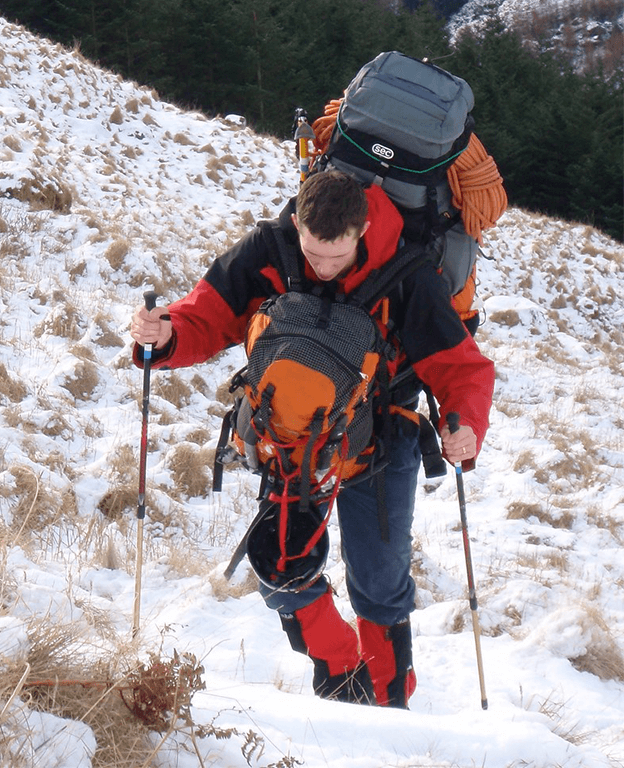
5. Prepare Beforehand
Remember to begin your preparation before the schedule, rather than leaving it to the latest possible time. The prior you start your journey preparing, the better, as the fitter you are, the more you’ll escape your excursion.
With regards to preparing, make an effort not to feel overpowered. Preparing shouldn’t be over-confounded. Likewise, eliminate however many hindrances as could reasonably be expected, so you can’t think of reasons not to prepare. For instance, arrange your workout clothes the previous night, set updates on your telephone, and keep an exercise schedule.
It’s genuinely simple to get ready and train for any endeavor on the outside, regardless of whether a short 1-2 road trip or a more drawn-out multi-day trekking or hiking experience. We suggest city tenants stroll up and down the stairs to fortify their legs and mimic strolling uphill. Other than that, endurance-building exercises like running and cycling can likewise help. In any event, when utilizing security guards or donkeys, adventurers need to convey a day load with warm tops, water, and bites.
Your body attempts to conform to the weight and distress of conveying one over an enormous distance. Set up your body by scaling and down the stairs with an 8-10-pound knapsack. Keep track by either taking note of the time or the occasions you stroll here and there and pushing the bar every week for, at any rate, two months.
6. Choose the Right Agency
Picking the agency can enhance your experience. This can be an expert outfit or an accomplished nearby guide who can arrange gear, doorkeepers, donkeys, food, clinical supplies, and so forth.
So, search for somebody who is very much familiar with the territory and has experience putting together journeys there. This is vital as the climate in the mountains is unusual, and you need a guide who knows the mountains, can tell when the climate is changing, and manage you to a protected spot.
It’s in every case great to reward the local economy by utilizing aides and door attendants from the locale. Enquire if the visit administrator is essential for any affiliation or assemblage of administrators that set up wellbeing and quality guidelines and has a complaint redressal system.
7. Say No to Pollution
Significantly, you and your group leave as a couple of trekking trails as could be expected. Convey as little as possible; any non-biodegradable waste you bring should be done in the mountains. Covering it in the ground is the solitary camouflage and damages the climate.
While making a fire, ensure you do so dependably, complying with nearby laws and rules. Utilize just deadwood. Try not to hurt natural life or the backwoods. Leave plants and trees as you discover them.
Try not to dirty streams, waterways, and water bodies used by locals downstream. Uproarious commotions like yelling, hollering, and loud music consider clamor contamination and unsafe to natural life and the individuals who go outside looking for harmony and peacefulness.
Take pictures, sit on a stone and sketch the view, compose a sonnet or put your musings down in writing. These exercises will give you incredible pride and something extraordinary to recall the occasion.
How to Prepare for Trekking?
Trekking is challenging to work without some pre-trip preparation or a decent fundamental degree of wellness. Here are a couple of our top prep tips for your forthcoming journey.
Start Right Away
This may seem like the most apparent advance. However, you’d be shocked by the number of individuals who don’t do it. The ideal approach to planning for a long walk is to take some genuinely long strolls. You should begin with little distances and work up to the length you’ll travel on your outing.
When you start your preparation, leave a day in the middle of each stroll to allow your body to recuperate. As your body gets fitter, attempt to do consecutive meetings every day – it’ll help fabricate your endurance for the tireless idea of a ten-day journey, where you will not have the advantage of rest days. Preferably, it would help if you had the option to walk for 4-6 hours – serenely – before you leave.
Start Leg-Based Cardio
Just as long strolls, you ought to likewise work some leg-based cardio into your daily schedule. Cycling is magnificent for developing muscle in your legs, yet soccer, football, squash, and swimming are also essentially extraordinary.
If you’re more into rec center exercises, stir up your twist classes or cycling overflows with squats and rushes (the more weight, the better). Step climbing is a decent way to develop calves and quads, so use the stairwell rather than the lift or elevator when you’re grinding away or the train station.
Walk Appropriately
You’ve been doing it since you were around one year old, yet it’s too critical to screen how you’re strolling in case you’re doing it accurately. Ensure you’re hitting the ground with your heel first, moving onto your toe, which pushes you to the following stage (this will help lessen the danger of shin supports and ligament pulls – ouch). Stroll with your head up, eyes forward, and bears level.
Think About Your Training Conditions
When you’re on your journey, it’s impossible you’ll be strolling on level trails and streets, so try not to prepare exclusively on level pathways and streets. Attempt to prepare on surfaces that will be like the path on the journey.
In case you’re making a beeline for Everest or Kili, expect to prepare on steep, rough landscape and free shale. If it’s England, you need to get familiar with sloppy ways. It’s genuinely significant you set up your feet, lower legs, and knees for the pressure they’ll encounter on the excursion.
It’s additionally far-fetched. You’ll get ten long periods of ideal climate on your journey, so set yourself up for all conditions by strolling in chilly, windy, stormy, warm, and muggy conditions.
Use A Backpack During Training
On the entirety of trekking trips, you will not convey your primary pack, yet you should convey a little daypack loaded with fundamentals like your camera, snacks, sunscreen, water, and wet-climate gear. So with every one of your days/weeks/long stretches of preparing, ensure you’re testing yourself with a weighted sack.
If you truly need to push it, gather your pack with a couple of additional items. Hence, it’s somewhat heavier than what you want to climb on the excursion – it’ll cause the inevitable journey to feel like a stroll in the recreation center.
Best Tips to Use Trekking Poles Like A Pro
Here is how you can start using trekking poles for your next trip. These will help you acclimate to the idea and prepare for the event.
Get Acquainted
Get to know how to change the length of your posts. Remain with your elbows bowed at 90 degrees and changed the length so the hold finds a way into your hands at that level. If you find that you need to lift the shafts frequently over rocks or grass, you might need to abbreviate the posts a bit.
If you have 3-segment poles, one idea is to set the top segment at the halfway point and afterward change the base segment to the correct length for strolling fair and square. When you need to change the length, you’ll have the option to change the top segment.
Use the Straps
If your posts have a strap, bring your hand up through the lash and grasp the shaft afterward. This results in the tie being over the rear of your hand (and not contorted), with your thumb over the lash. Check our guide about the differences between carbon fiber and aluminum trekking poles to choose the right one that suits your trial conditions.
Change the strap length, so the shaft is secure in this position. A few posts have ties named left and are ideal for your benefit. Using the tie, you’ll have the option to deliver your grasp on the shaft for a short time without tumbling to the ground.
Grabbing The Pole
Your hang on the pole ought to be loose, with the post ready to pivot forward and back between your thumb and pointer. The handgrips are typically calculated to help with their utilization. If you keep your hold loose, it will require negligible exertion to flick the shaft forward with each progression.
To become accustomed to the correct grasp, hold it between your thumb and pointer without using different fingers. That’s everything you’ll genuinely require. You can close different fingers freely. A solid handle on the pole isn’t required and can tire your hands and wrists. Don’t stress, and you will generally fix your hold on the off chance you feel yourself slipping or need a state of steadiness briefly while strolling.
Understand the Arm Motion
Keep your elbows near your sides as you walk and utilize the shafts. With each progression, flick the inverse side’s shaft forward. This is a little upward movement of the lower arm or a slight wrist flick. If you have a freehold, it will make the shaft turn forward effectively.
On the contrary, arm/leg movement is significant. If you bring a similar arm and leg forward, you will wind up with an influencing step. You may have to rehearse this from the outset on the off chance that it doesn’t easily fall into place.
Walk just hauling the shafts behind you with a characteristic step, and you should see that you fall into the contrary arm/leg design. You can bring the shafts up enough so the tips contact the ground with each progression.
There is no compelling reason to plant the tip into the ground solidly. Your arms can push ahead and in reverse generally as you walk. You don’t need any constrained or overstated arm movement. Change the length of the posts so you keep a calculated elbow as your shafts contact the ground.
Going Downhill with Poles
At the point when you go downhill, you might need to relax the straps or remove your hands from them, as they can get excessively close with the expanded point. You can extend the posts by 5 centimeters to 10 centimeters. Instead of planting the posts corresponding with your body, you will plant them somewhat ahead to give a touch of slowing down activity.
Pick your way down with little advances, keeping your knees delicate. Keep the posts in front of your body. For steep slopes, if you have a wide way, you might need to crisscross to and fro across the path with at least three stages, making your little bends. For strength going on the first floor, place the two posts on the following lower step and afterward venture down.
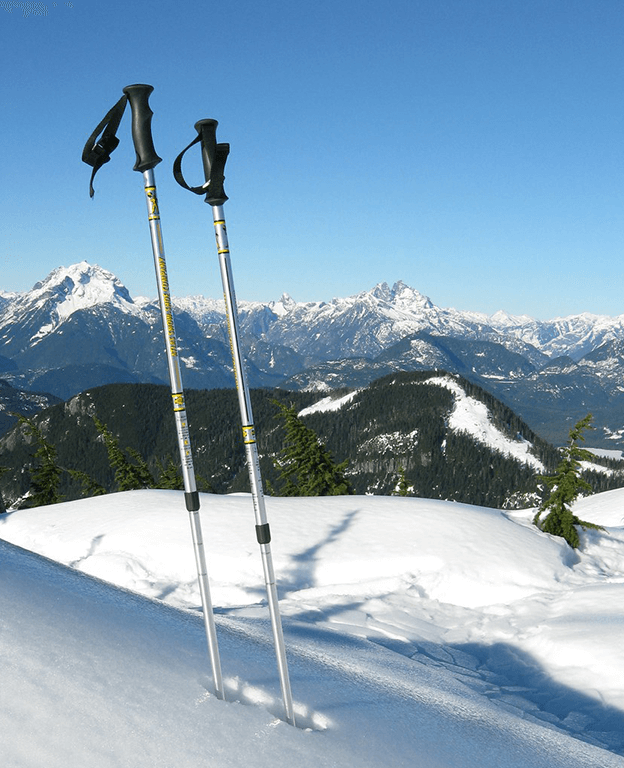
Going Uphill with Poles
You might need to abbreviate your posts for going uphill. Keep the posts near your body, and don’t plant them in front of you. You must give yourself a little push up the slope, not a force. For steadiness going higher up, you will propel yourself up instead of pulling. Plant the two shafts close to your feet, venture up, and bring the posts up to meet your feet. Push, step, push, step.
What Is the Bottom Line Here?
While going on a multi-day journey (trekking trip), it’s wiser to share your itinerary items with loved ones. Sharing your schedule and trip guide could be helpful if you get lost en route.
Do a final gear check before leaving to guarantee soft trekking. Is your GPS working? Do you have batteries in your spotlight? Do you have a medical aid pack with you? A few groups utilize agendas to ensure they have all they require.
Part of the excellence of trekking has the option to separate yourself from the regular buzzing about of life. Unplug and appreciate being on the outside. Appreciate the landscape, take in the outside air, and value the things you see en route. In this way, the central part is to appreciate the excursion, regardless of whether you’re trekking up a mountain in the town you live in or going to some outlandish remote.
In case you’re keen on trekking yet don’t have a great deal of involvement, it very well may be a little overpowering when you are initially beginning. However, with the tips above, you can quickly get ready for trekking and make it a fantastic journey for yourself. Start practicing and get friendly with the terrain.

